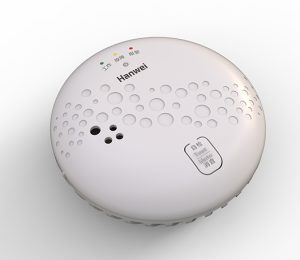Smoke alarms are vital safety devices designed to detect the presence of smoke in residential, commercial, and industrial settings. Proper placement of smoke alarms is crucial to maximize their effectiveness in alerting occupants to potential fire hazards. Here is a guide on where to install smoke alarms:
1. Bedrooms: Install smoke alarms inside each bedroom, especially if individuals sleep with the door closed. The early detection of smoke within the sleeping areas can provide valuable time for evacuation.
2. Hallways: Place smoke alarms in every corridor or hallway outside sleeping areas. These locations serve as primary escape routes and installing alarms there helps ensure early detection of smoke throughout the escape path.
3. Living Room/Family Room: Install smoke alarms in common areas where people spend a significant amount of time. These areas are prone to accidental fires due to electrical appliances, heating sources, or candles.
4. Kitchen: Although kitchens can generate false alarms due to cooking activities, it’s essential to have a smoke alarm installed near the kitchen area. Consider placing it at a reasonable distance from cooking appliances to reduce false alarms without compromising safety.
5. Basement: Install smoke alarms on the ceiling at the bottom of the stairs leading to the upper level. Basements often house heating equipment, electrical panels, or storage areas where fires can start unnoticed.
6. Near Sources of Heat or Flames: Install smoke alarms away from direct airflow from bathrooms, heating appliances, or fireplaces to prevent false alarms caused by steam, dust, or smoke from normal activities.
7. Ceiling Placement: Mount smoke alarms on the ceiling whenever possible. If ceiling placement is not practical, install them high on walls, keeping them at least 4 inches away from the ceiling.
8. Interconnection: For enhanced safety, interconnect smoke alarms within the home. When one alarm detects smoke, all interconnected alarms will sound, providing early warning throughout the property.
Remember, following the manufacturer’s guidelines for installation and maintenance is crucial. Regularly test smoke alarms, replace batteries (if not hardwired), and replace the entire unit according to the recommended timeline, usually every 8-10 years.
By strategically placing smoke alarms in key areas throughout a building, occupants can significantly increase their chances of early detection in the event of a fire, allowing for timely evacuation and potentially saving lives.


Please contact us for free quotation by form below. We promise the quickest response within 24 hours: